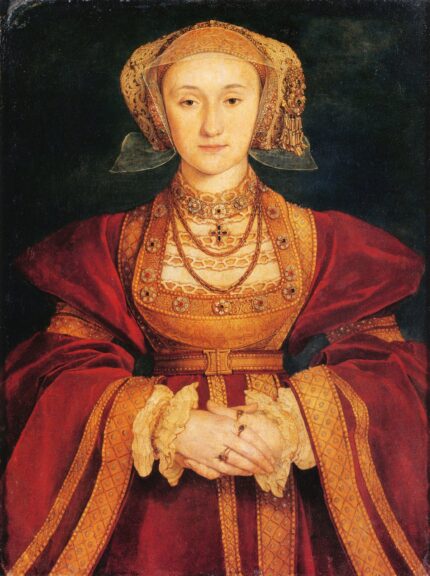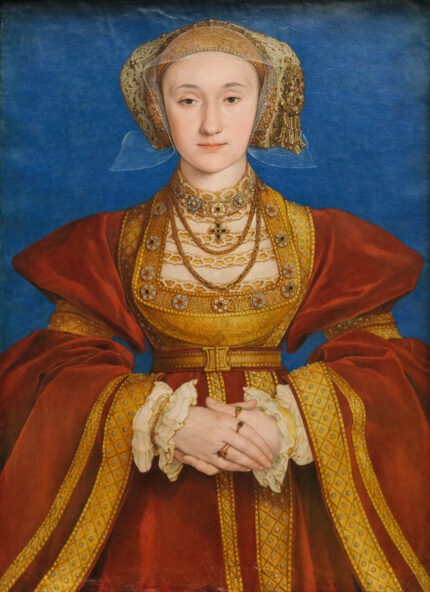The iconic portrait of Anne of Cleves, fourth wife of Henry VIII, that enchanted the king into marrying her, has been cleaned and conserved by Louvre experts for the first time since it was painted, restoring its original colors and glow. The portrait, painted by Henry’s court painter Hans Holbein the Younger, is much lighter now that the yellowed varnish layer is gone. The formerly murky teal background is a bright blue; the gold and jewels of her gown and headdress visible in great detail. Her skin, once sallow, is a dewy pink again.
In 1538, Henry sent his court painter Holbein to Düren to capture Anne of Cleves’ likeness so Henry could see her before deciding whether to marry her. For ease of transportation, it was painted on vellum that was later glued to wood instead of painting directly onto wood panel. Holbein was usually known for the verisimilitude of his portraits, but he had to thread a bit of a diplomatic needle with this commission. He couldn’t flatter Anne too much or Henry would be deceived in his future wife’s features, but the officials of Cleves would vet it before it was sent to England, so too much realism wouldn’t do either.
Holbein depicts Anne dressed in an opulent red silk gown with gold and pearl trim, her round, cherubic face looking placidly at the viewer through lidded eyes. Her features are petite and symmetrical and her expressionless face evocative of the highly stylized archaic smile of a kouros statue. The Anne in the portrait appealed to Henry well enough, and as an alliance to the powerful, rich Protestant Duchy of Cleves even more so. It would give isolated England a whole new friend group among the central and northern European Lutheran countries. The marriage moved forward.
The woman herself, however, repulsed him. Rather than a petite, delicate cypher, she was tall and broad. When he saw her in person for the first time, he felt the portrait had deceived him. Her did not find her physically attractive, nor did she attract him with her personality. She spoke no English, played no instruments and was generally a listless companion for a social butterfly like Henry. To preserve England’s relationship with the Protestant rulers of Europe, Henry VIII negotiated a very generous divorce agreement and six months after their marriage, Anne of Cleves graduated from fourth wife to “sister of the King,” and left the throne laden with riches and properties. She was friends with Henry for the rest of his life, and lived a long one herself, spending her fortune on sumptuous clothes, fine dining, gambling and hunting.

